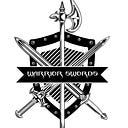Ancient Viking Axe: A Glimpse into Viking Weaponry and Culture
The ancient Viking axe is one of the most iconic weapons in history, symbolizing the power, craftsmanship, and warrior spirit of the Viking Age. Used both in battle and as a tool, these axes played a crucial role in the lives of the Vikings, who dominated northern Europe from the 8th to the 11th centuries.
In addition to axes, the Vikings also wielded swords that carried fascinating tales. While the axes are well-known symbols of Viking prowess, less-known Viking sword legends reveal the intricate artistry and spiritual significance tied to these blades. These stories often intertwine with the discovery and preservation of Viking axes, providing a broader window into the past. Together, these artifacts offer valuable insights into the culture, technology, and warfare of the Viking people. The Significance of the Viking Axe
The Viking axe was not just a weapon of war; it was also a vital tool for everyday life. Vikings used axes for chopping wood, hunting, building ships, and farming. However, in battle, the Viking axe became a symbol of deadly efficiency. Unlike Viking swords, which were expensive and often reserved for the elite, axes were more affordable and widely accessible, making them the weapon of choice for many Viking warriors.
Viking axes were designed for both cutting and throwing. Their wide, crescent-shaped blades made them effective for hacking through armor or shields. Some were small enough to be used with one hand, while others were large, two-handed battle axes, also known as “Dane axes.” The simplicity and versatility of the axe allowed it to become a fundamental part of Viking warfare.
Types of Ancient Viking Axes
There were various types of Viking axes, each suited for different purposes:
- Bearded Axe: This is one of the most recognizable Viking axe designs, featuring a long blade that extends downward, resembling a “beard.” The design allowed for better control and a larger cutting edge, ideal for battle and utility purposes.
- Dane Axe: A large, two-handed weapon, the Dane axe was used by elite Viking warriors. It featured a long shaft and a broad, sweeping blade, making it a formidable weapon in combat, capable of cleaving through armor and shields with ease.
- Throwing Axe: Vikings were also known for their skill in throwing axes. These were typically smaller, lighter axes designed for short-range combat. A well-thrown axe could incapacitate an opponent before they even reached the Viking lines.
Viking Craftsmanship: How the Axes Were Made
The craftsmanship of ancient Viking axes was exceptional, with blacksmiths using a combination of iron and steel. The cutting edge was crafted from harder steel for sharpness and durability, while the rest of the axe was forged from iron. These weapons played a crucial role in Norse society, symbolizing power and status. How weapons and warfare shaped Norse society is clear in their use, as axes were essential for both combat and daily life, influencing social standing and survival.
The shafts were typically made from wood, often sourced from ash trees, which provided strength and flexibility. Some Viking axes were also ornately decorated, with intricate carvings and inlays of silver or bronze, demonstrating the skill and artistry of the Viking craftsmen.
The Role of the Viking Axe in Battle
The Viking axe was highly effective in battle, offering both offensive and defensive capabilities. In close combat, the axe could be used to slash through enemy defenses, while the wide blade could catch and disarm opponents. The larger two-handed axes were particularly devastating, as they allowed Vikings to swing with great force, causing catastrophic damage to both armor and shields.
Additionally, Viking warriors often used their axes in conjunction with shields, creating a balanced fighting style that made them formidable on the battlefield. Their axes were light enough to carry on long raids yet deadly enough to strike fear into their enemies.
Archaeological Discoveries of Vikingaxes
Many ancient Viking axes have been uncovered across Scandinavia, the British Isles, and other areas where Vikings traveled and settled. These discoveries have shed light on the diverse designs and uses of Viking axes, as well as the Viking expansion into Europe.
In some cases, axes have been found in Viking burial sites, suggesting they held symbolic importance in the afterlife. These axes are often well preserved and provide historians with valuable information about Viking craftsmanship, warfare, and culture.
Conclusion: The Legacy of the Viking Axe
The ancient Viking axe remains a symbol of the Viking Age, representing the strength, ingenuity, and warrior culture of the Vikings. The Viking axe, vital for both battle and daily tasks, symbolized Norse ingenuity and resilience. Its discovery connects us to Viking civilization, showcasing their craftsmanship and resourcefulness. Paired with lesser-known Viking sword legends, these tools and weapons illuminate the strength and mystery of a culture that continues to fascinate today.
Understanding the craftsmanship and significance behind these ancient weapons gives us a deeper appreciation of Viking culture and their remarkable influence on European history.
